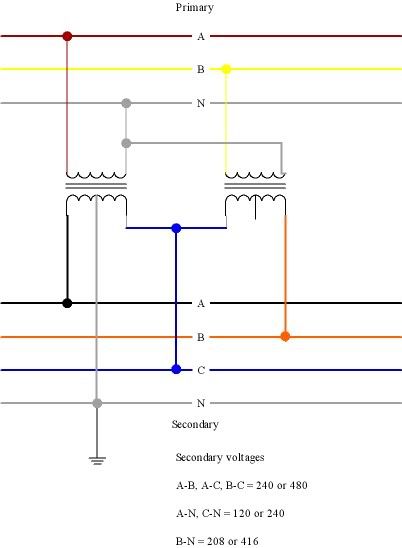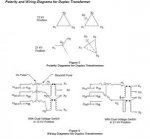kwired
Electron manager
- Location
- NE Nebraska
- Occupation
- EC
Can one of you smart guys post the picture of the open delta secondary and explain this via that picture so us not-so-smart guys can learn something?
I am confused which winding you are referring to as the 'stinger' winding.
I know and have serviced this type of system, but I want the low down on it as far as the capacities of each phase.
Thanks
See page 9 of this Cooper publication:
http://www.cooperindustries.com/con...urces/library/201_1phTransformers/R201902.PDF
Note the symbollic diagram shows the higher-voltage-to-ground terminal as "a", which it can be on the POCO side of the service point. On the load side of the service point, the NEC requires it be connected as B [408.3(E)]
Just because your user name is Smart doesn't mean he was directly asking you
How about this.



